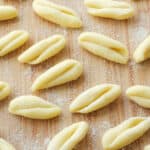Cavatelli
This post may contain affiliate links. Please read my disclosure policy for more details.
You’ll fall in love with this Italian cavatelli pasta recipe! It’s delicious, easy to make, economical, it uses only 2 ingredients and no fancy equipment required.
It’s also vegan, freezable, and terrific with this spinach pesto or with your favorite pasta sauce!
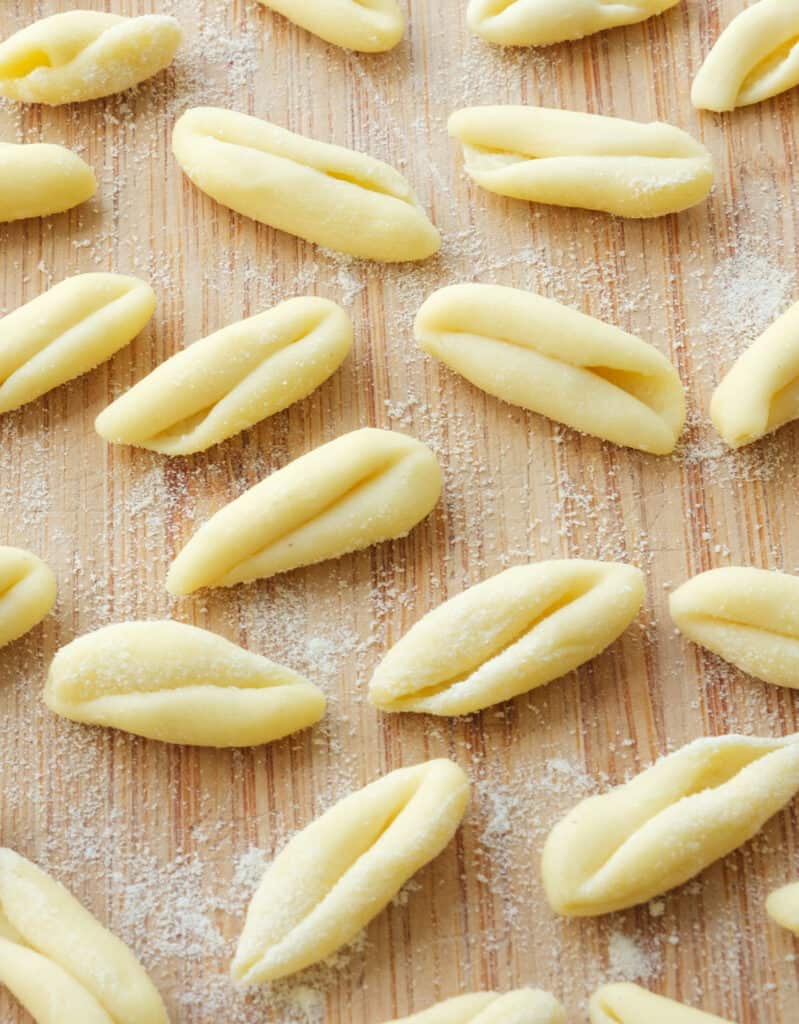
If you’re not new to The Clever Meal, you’ve already know how much I love pasta! From quick pasta recipes, vegan pasta recipes to scrumptious Italian pastas, I’ve been sharing so many recipes featuring this affordable pantry staple.
But I’ve realized only now that I missed one of the most delicious homemade Italian pasta: cavatelli.
Cavatelli is a typical Southern Italian pasta originally from Puglia and Molise and it’s made out of just 2 ingredients: durum wheat semolina flour and water, nothing else.
Its distinctive chewy, luscious texture is extremely satisfying and perfect to go with just about any vegetables or pasta sauce.
Cavatelli makes such a terrific family meal, great for a Sunday lunch, economical, and deliciously filling.
In this simple recipe, I’ll show you with step-by-step photos how I learned to make cavatelli from my mom and my nonna. The whole process is so simple, fun, and once you’ve tried it, I’m sure you’ll be making homemade cavatelli like an Italian. : )
List of the ingredients
- Warm water
- Durum wheat semolina flour
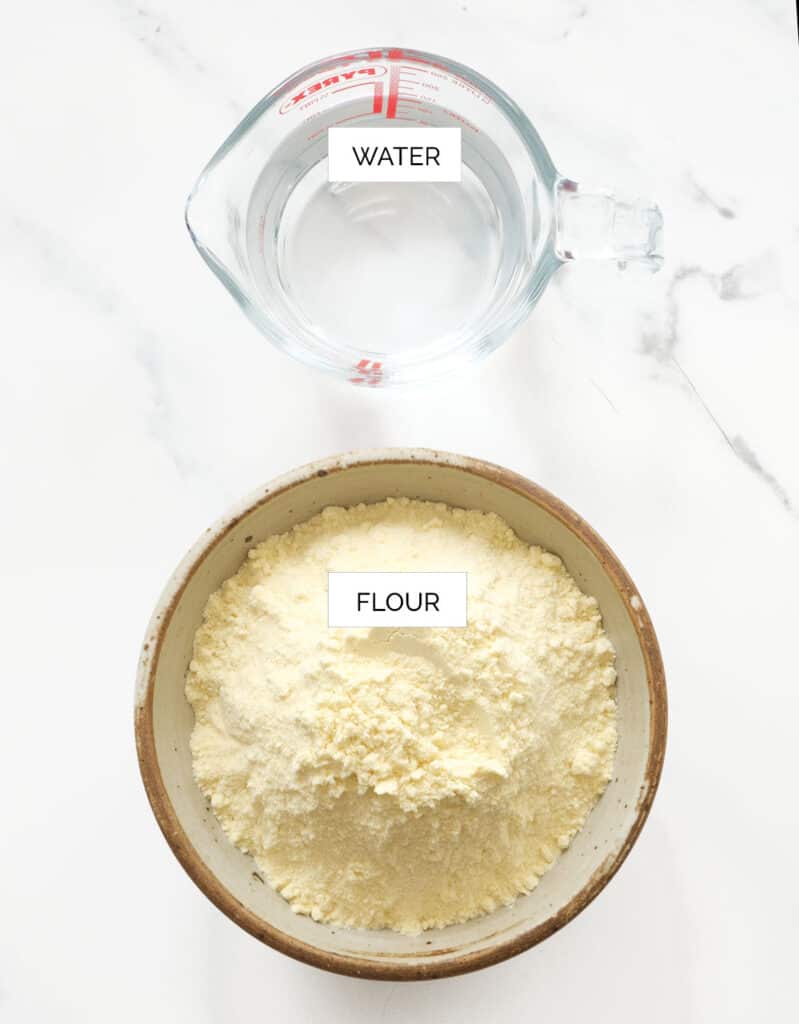
What is durum wheat semolina flour?
When you look for the pasta flour, make sure you buy durum wheat semolina flour (Italian semola rimacinata). This is a very fine semolina flour, and its higher gluten content helps the pasta hold it’s shape.
It also has a coarse, grainier texture and has a pale yellow color. You can find it online or in Italian food stores.
However, there are many cavatelli recipes that use other type of flour, including all-purpose flour, but the end result will be softer and definitely less firm.
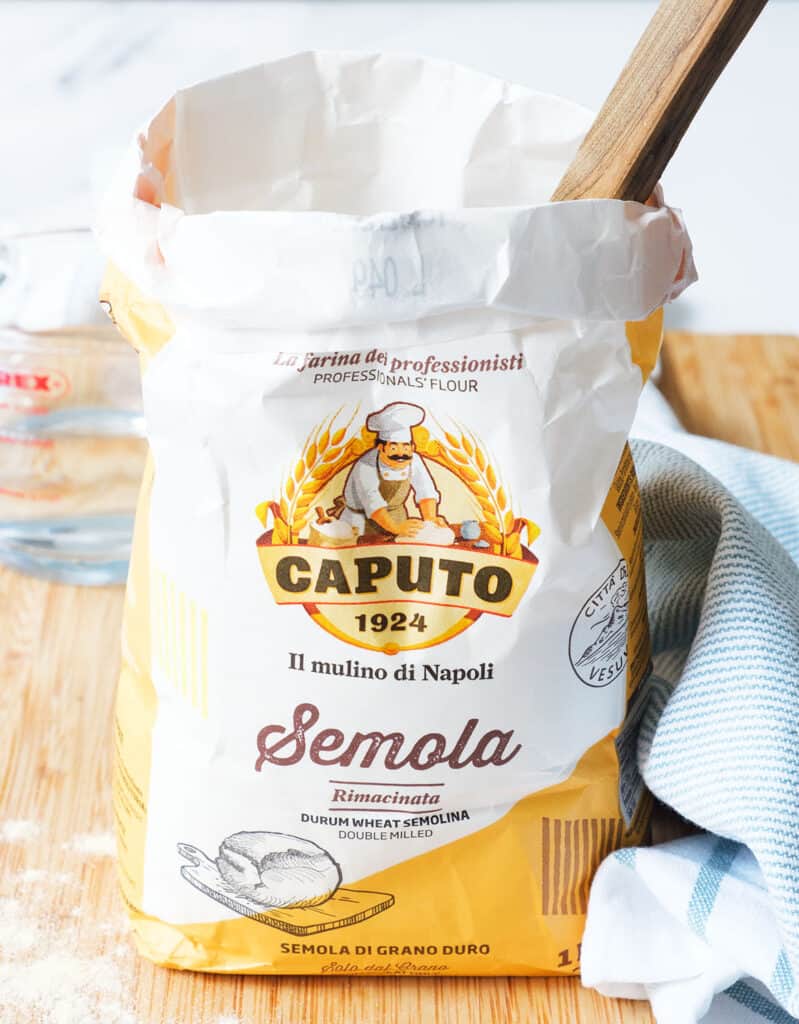
How to make cavatelli
(Note: this is a quick description with step-by-step photos, the full recipe is at the bottom of the page)
- Place the flour on to a clean surface or into a bowl and make a well in the middle (I start using a bowl here, I think it’s easier if you’re new to homemade pasta).
- Gradually add warm water, using a fork or your fingers to bring the flour in from the outside until it forms a dough.
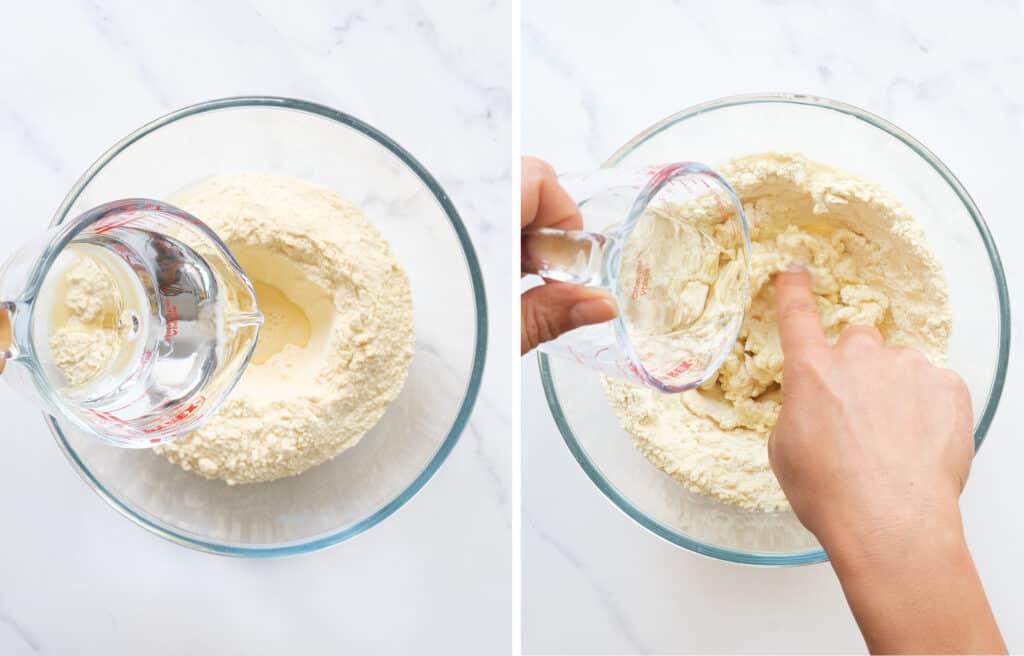
- Mix dry and wet ingredients until the water is fully incorporated into the flour. It looks crumbly, but it’s totally fine.
- Then transfer the dough onto a surface and start kneading.
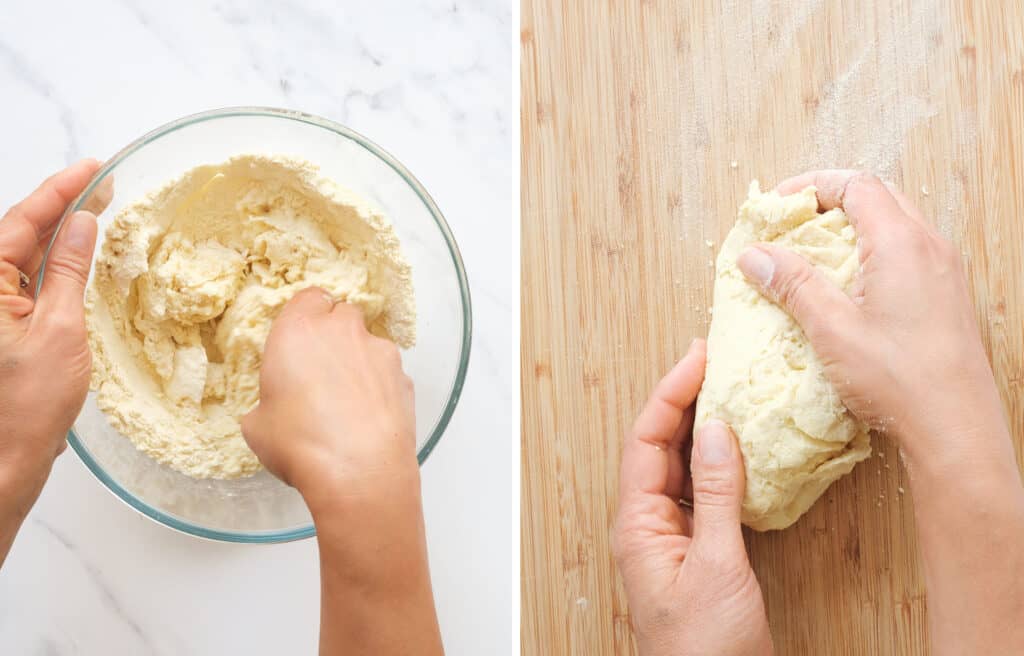
- Knead on a clean surface for at least 5 minutes, or until smooth and elastic.
- Shape the dough into a ball, cover with plastic wrap and let it rest for 30 minutes.
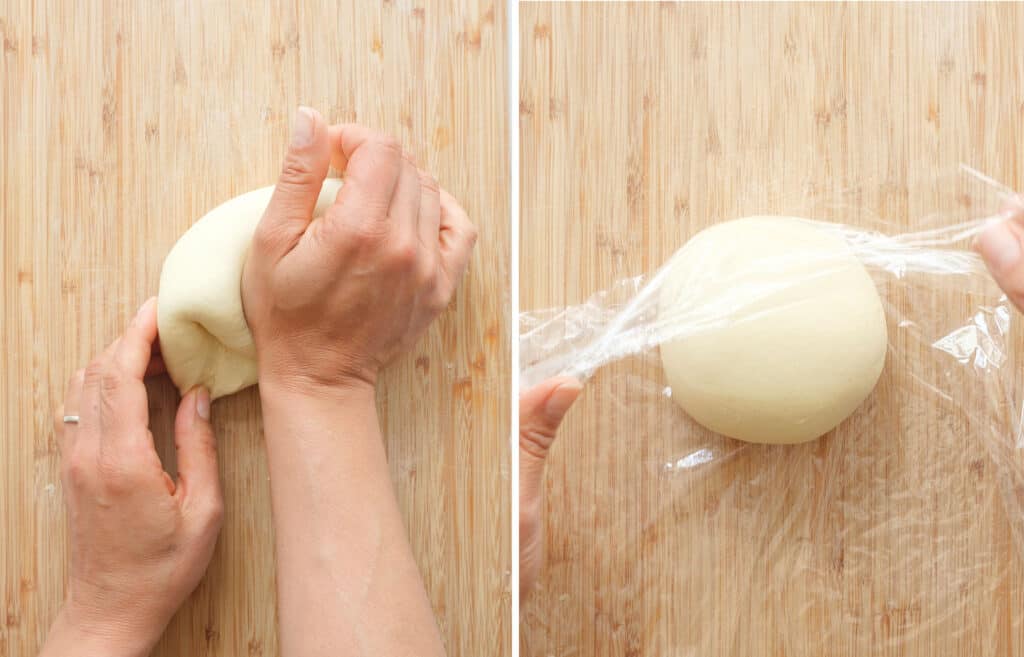
- After this rest, cut the dough into 4 or 8 and work with a portion at a time.
- Roll each piece into a long sausage shape about 1cm/ ½ inch in diameter.
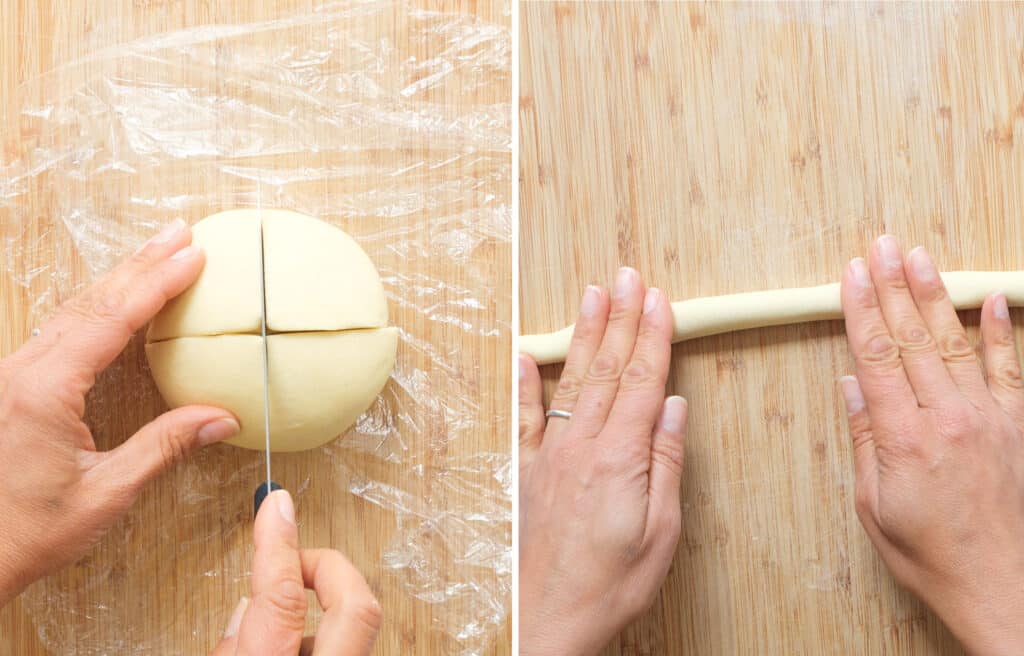
- Cut it into small chunks (about 1cm/ ½ inch)
- Shape the cavatelli: gently squash each chunk of dough with your thumb or with a the back of a knife, then roll it off to create a smooth shell shape.
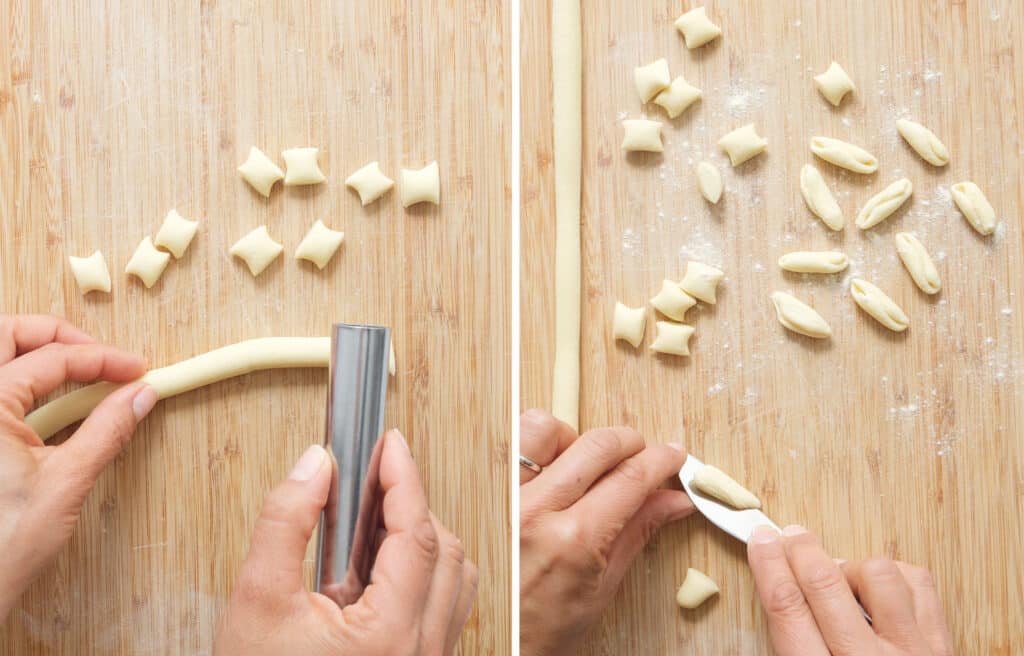
- In the picture below I use the back of a knife to drag the pieces of dough across the cutting board to make the hollowed shapes.
- Place cavatelli in a single layer (not touching one another) on a tray or on parchment paper and sprinkle with semolina/flour.
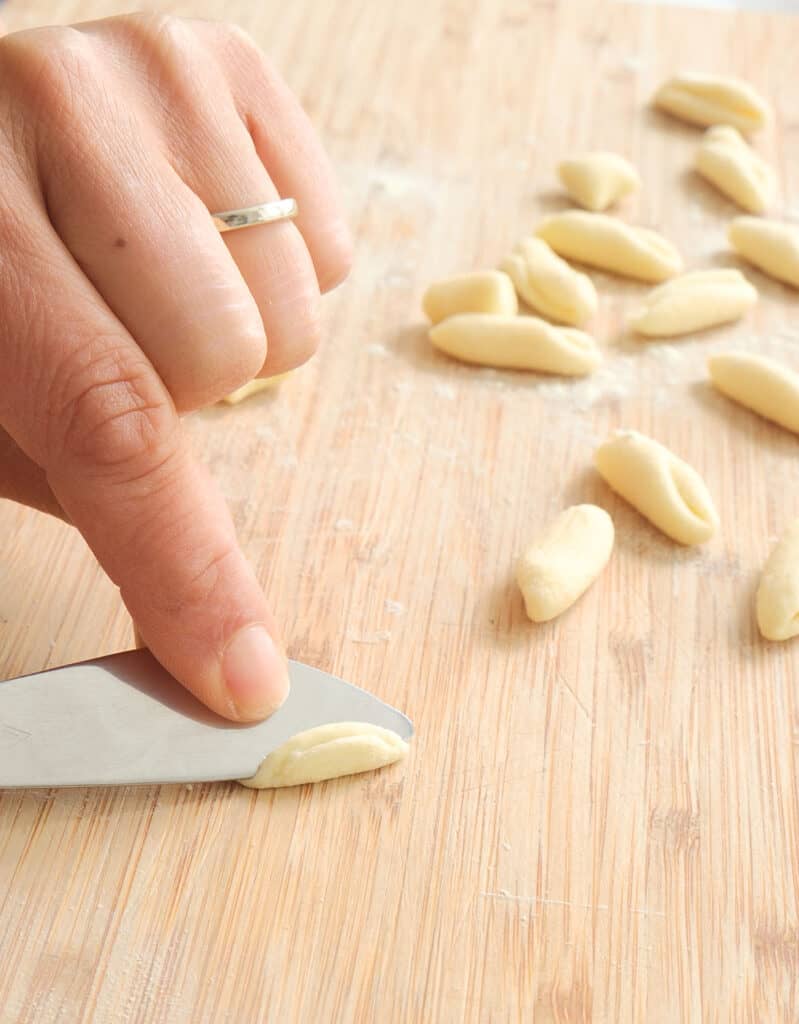
Recipe notes & tips
Important tips!
Use warm water: the water should be pretty warm (not boiling, not lukewarm). This helps to shape the dough easily.
Let the dough rest: this enables to relax the gluten and make the dough flexible and easy to work with. This is an important step, don’t skip it!
Keep the dough covered: roll a smaller portion of dough at a time and keep the remaining dough wrapped in order to prevent it from drying out.
Work on a wooden surface if you can: this is the traditional way and helps to shape the cavatelli easily. A wooden chopping board works just fine.
Don’t dust the work surface with any flour: the dough will slide on a floured surface so it’s better to work on a cleaned surface, ideally a porous wooden board.
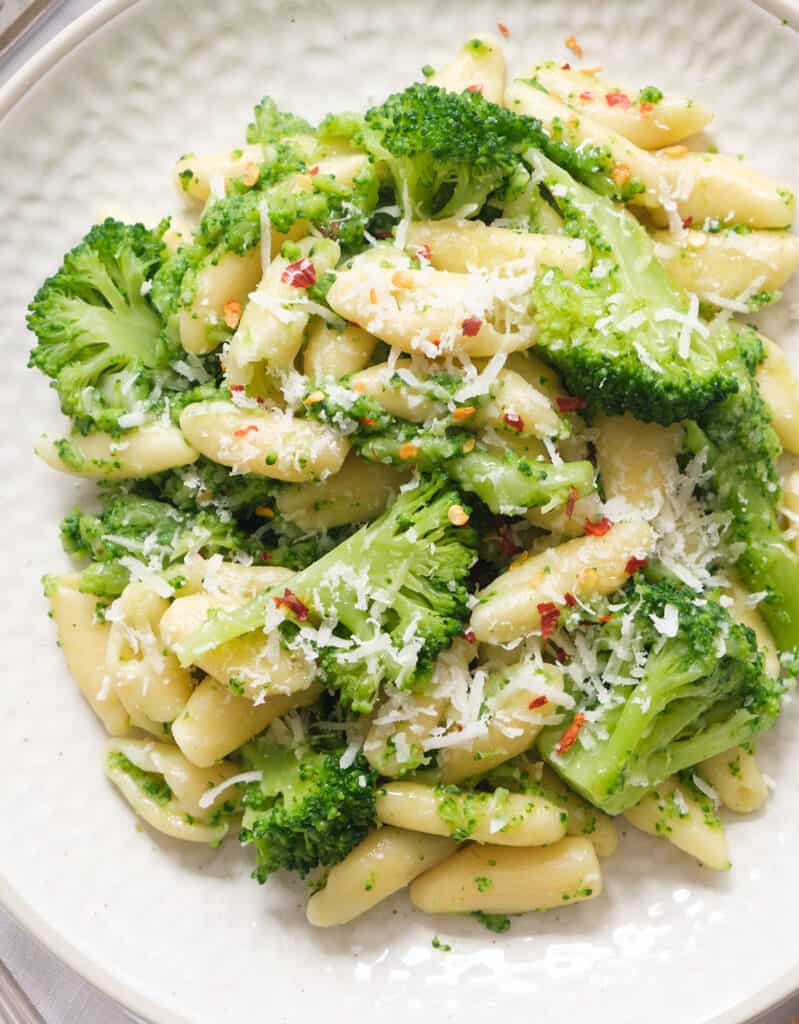
How to freeze cavatelli
Arrange uncooked cavatelli in a single layer across a floured baking sheet or tray. Freeze for a couple of hours, and then transfer to double layer freezer bags. You can freeze for up to a couple of months. And you can cook straight from the freezer (frozen cavatelli will have a slightly longer cooking time).
How to cook cavatelli
Cook cavatelli in a large pot of salted boiling water until they start floating to the surface, then let boil for about 2-3 minutes. Taste and make sure the pasta is done. Keep in mind that its texture will be soft and springy, and since this pasta isn’t dried through to the center, it’s not possible to cook it until al dente.
Perfect recipes for homemade cavatelli pasta!
Here I’ve gathered a few recipes perfect for cavatelli pasta. All you have to do is to adjust the pasta cooking time:
If you make cavatelli pasta, let me know. leave a comment and/or give this recipe a rating. I would love to hear from you guys and get your feedback!
And for more recipe updates, subscribe my newsletter and follow me on Instagram, Pinterest and Facebook. And of course, if you make this recipe, don’t forget to tag me. : )
Cavatelli
Ingredients
- 2 scant cups (300 grams) Durum wheat semolina flour
- ½ cup + 2 Tbsp (150 grams) warm water
Instructions
- Place the flour on a cleaned surface or in a large bowl. If you're new to homemade pasta, It's a good idea to start off the dough in a bowl and once it starts to take shape, transfer it to the counter.
- Make a well in the middle and gradually add the warm/hot water, using a fork or your fingers to bring the flour in from the outside until it forms a dough.
- Use your hands to gather the crumbly bits to shape into a dough. Transfer to a clean work surface and knead until a smooth and elastic. It takes about 5 minutes. The dough must neither be sticky nor too dry. If it is too dry, wet your hand with warm water and knead. Repeat if needed.
- Shape the dough into a ball, wrap in plastic film and let it rest for 30 minutes at room temperature.
- Divide the dough into 4 or 8 pieces. Use one portion at a time and cover the rest.
- Roll each portion into a long rope of about 1 cm/½ inch in diameter. Do not add extra flour to your work surface.
- Cut into approximate 1 cm/½ inch pieces, and gently squash each piece of dough against with your thumb or with the back of a knife, then roll it off to create a shell shape. If the dough sticks to the surface, dust with a touch of flour, but not too much.
- Place in a single layer (not touching one another) on a tray, parchment paper or large baking sheets previously dusted with flour.
- Cook the pasta in a large pot of salted boiling water. The cooking time takes about 3 minutes, but it may vary according to the thickness of your pasta. Then drain and serve with your favourite pasta sauce, and enjoy!

